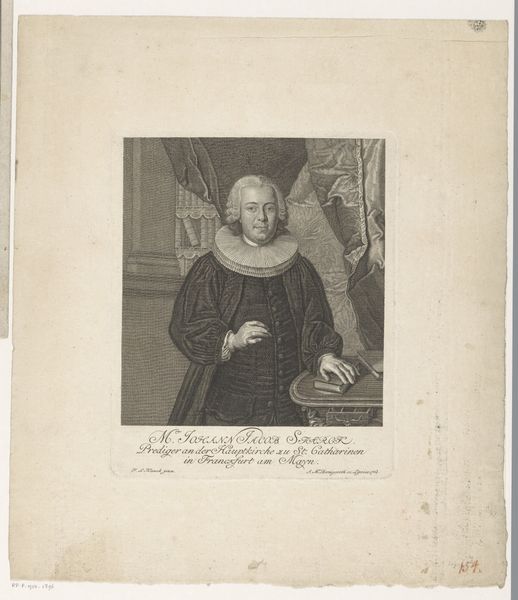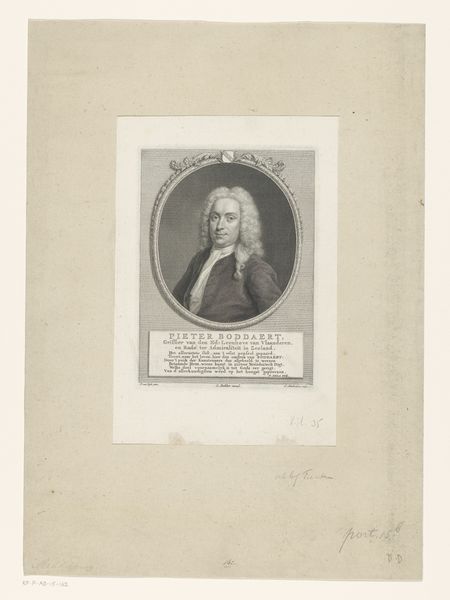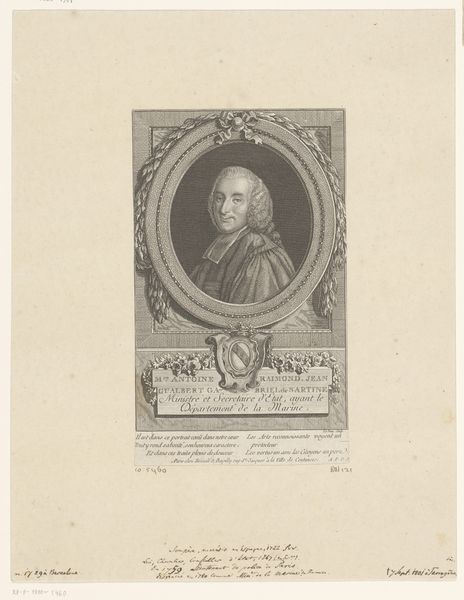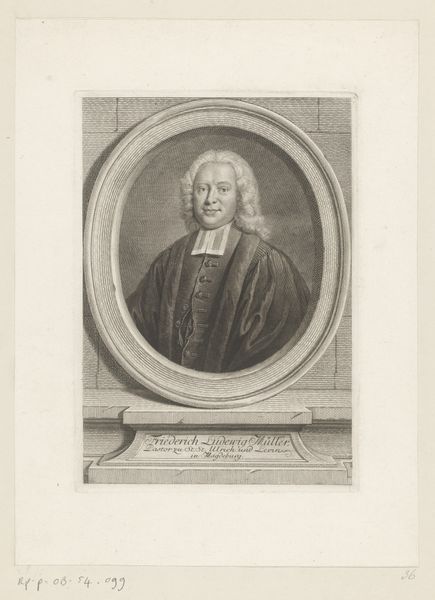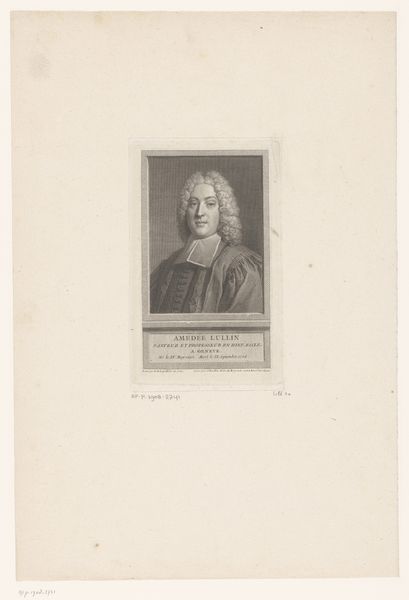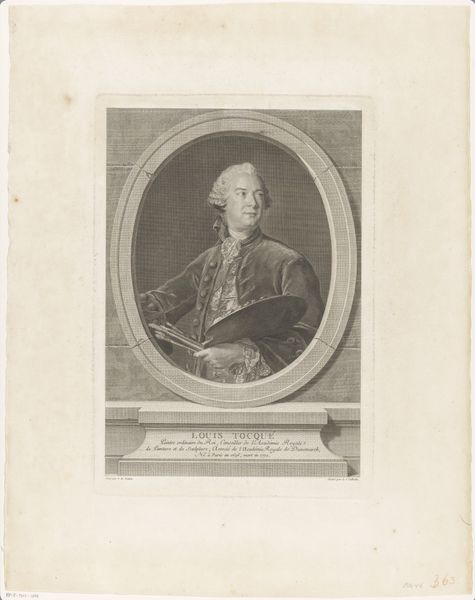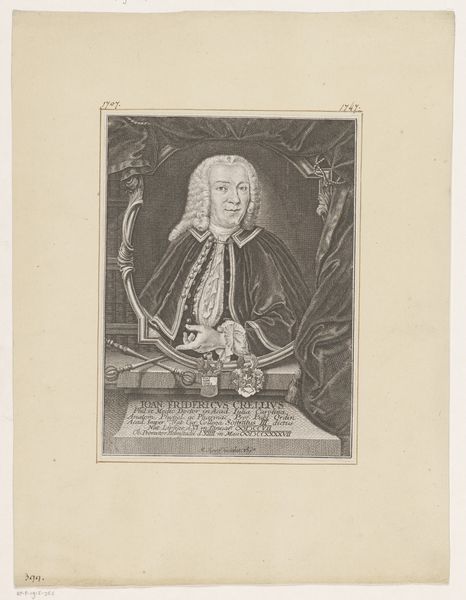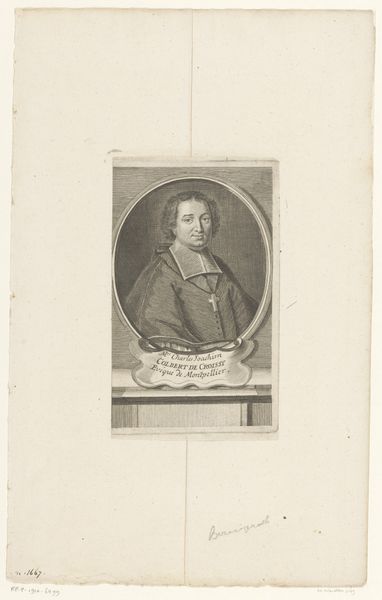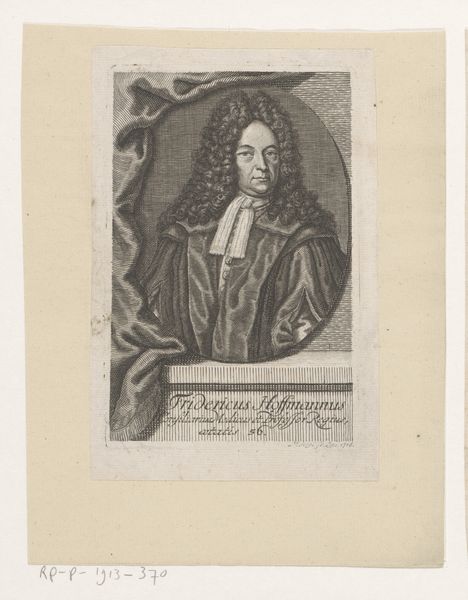
Dimensions: height 150 mm, width 98 mm
Copyright: Rijks Museum: Open Domain
Editor: We’re looking at "Portrait of Christian Wilhelm Franz Walch," an engraving by Gottlieb Leberecht Crusius, sometime between 1740 and 1784. It feels quite formal and composed; there's a real sense of dignity, doesn’t it? What do you see in this piece? Curator: Oh, absolutely, it's got that Baroque grandeur! For me, it's like stepping into a wig shop and a theological debate all at once. The precision of the engraving captures not only Walch's physical appearance – look at those perfect curls! – but also hints at his intellectual stature. Doesn't the architectural frame almost create a stage for him? Almost as if the world is watching. Editor: It does, and the curtain behind him adds to that theatrical feel! Do you think Crusius was trying to make a statement about Walch's importance? Curator: I suspect so. It was common to elevate scholars and important figures through portraiture, transforming them into almost heroic figures. Considering he was a Doctor of Theology and Professor, his intellectual gravitas had to be communicated. I see this portrait as more than just a likeness; it's an advertisement of the man's profound influence. And tell me, doesn't the text feel equally ornate? Editor: I see what you mean. It really makes it clear this image serves a purpose beyond just being a pretty picture! Curator: Exactly! And, it brings forth the important role engravings played at that time: circulating images and ideas widely. These portraits democratized access to celebrity, didn't they? Editor: That’s something I hadn't considered! It's fascinating how much history is embedded in this single image. Thanks! Curator: My pleasure! Art whispers the best stories, if we take the time to listen, doesn't it?
Comments
No comments
Be the first to comment and join the conversation on the ultimate creative platform.
